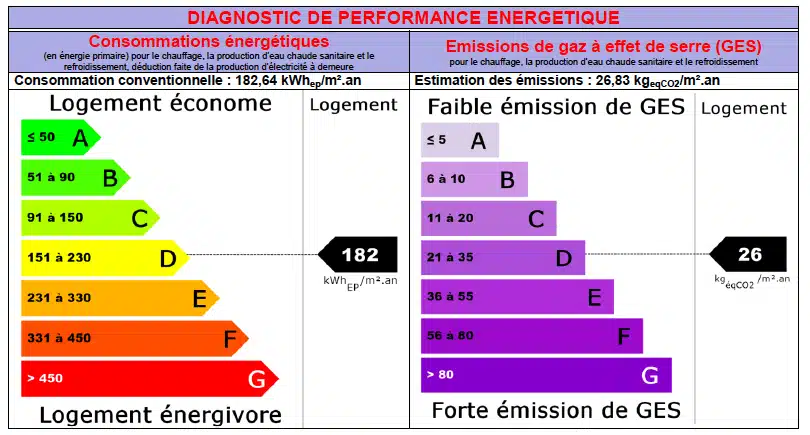When you look at houses or apartments to rent or to buy, there may be obvious problems that are visible to the naked eye: moisture in the walls, broken tiles, creaky wood floors, etc… Some potentially serious problems however are not easily detected by non-specialists. Which is why a detailed “diagnostique immobilier” is mandatory for any property transaction in France.
Before buying or renting a house or apartment in France you should always ask for and read the “diagnostique immobilier”. This important document may be provided when you make an offer. It must be provided at the latest before you sign a lease or a preliminary sales agreement (compromis de vente). As a buyer you have a mandatory ten-day cooling-off period after receiving this report to withdraw without penalty if you discover any issues that you don’t want to accept.
What is included in the diagnostique immobilier?
The diagnostique immobilier is a very large document detailing a large set of mandatory inspections and assessments designed to provide buyers or renters with important information about the condition of the property and about potential risks associated with it.
They include typically:
1. DPE (diagnostique de performance énergétique):
This assessement defines the energy efficiency of the property with information on energy consumption and greenhouse gas emissions.
2. Termites (diagnostique état termites et autres insectes xylophages):
This inspection declares the presence of termites or other wood-destroying insects that can cause structural damage to the property. Termites are unfortunately very common in the South and Southwest of France.
3. Asbestos (diagnostique état d’amiante):
This report details the presence of asbestos. It is mandatory only for older buildings constructed before 1997.
4. Lead (diagnostique constat de risque d’exposition au plomb CREP):
This assessment is mandatory for all properties built before 1949 and identifies the presence of lead, usually lead-based paint, in the building.
5. Electricity (diagnostique état de l’installation intérieure d’électricité):
This report deals with the safety of the electrical installations in the house or apartment. It is mandatory for all properties whose electrical installations are older than 15 years.
5. Gas (diagnostique état de l’installation intérieure de gaz):
This report shows the safety of the property’s gas installations. It is mandatory for all properties whose gas installations are older than 15 years.
6. Sewage (diagnostique de l’état de l’installation d’assainissement non collectif):
If the property is not connected to the public sewage collection network (and many houses in France are not, especially if they are on the outskirts or outside of a village), it must be equipped with a properly functioning septic tank, whose condition must be inspected by the local authority. The results of this inspections must be part of the diagnostique technique.
7. Natural and Technological Risks (diagnostique état des risques):
This part of the diagnostique immobilier deals with all known potential risk factors associated with the property’s location. It is mandatory if the area is prone to any of the following risk factors:
– possible exposure to technological risks – i.e. proximity to existing or planned chemical production plants, power stations, etc.
– possible exposure to risks from mining activity
– possible exposure to foreseeable natural risks – i.e. flooding, seismic activity, wild fires, radon etc.
– possible risk due to coastline recession
– possible noise pollution due to airport
All of these diagnostiques are typically carried out by certified professionals and are a mandatory and integral part of any property transaction process.
For Renters: Carnet d’information de logement
Since January 2023 a carnet d’information de logement (CIL) must be provided to renters. It includes floor plans, diagrams, cross-sections, and descriptions of the dwelling and of its utility and ventilation systems, insulation as well as operating, maintenance and servicing manuals for heating and cooling systems.
What is NOT included in the diagnostique immobilier?
Please note: the diagnostique immobilier does not contain any report on the building structure itself or on the roof. If you are in any doubt, you should hire a specialized provider to check these out.
Diagnostique immobilier is a MUST-READ in any rental or property transaction
The diagnostique immobilier is a very large and very technical document. You should read it very carefully however so you know all potential risks associated with your dream house or apartment.
We help our clients deal with complex issues like these as part of our rental search assistance or real estate packages. Let us know if we can help you too!
You may want to read these articles as well:
All articles by: Gabriele





